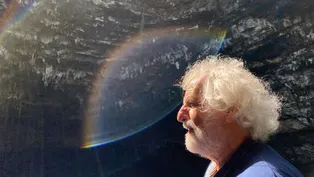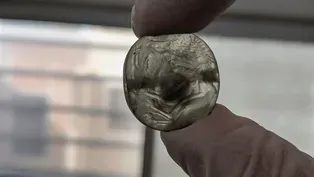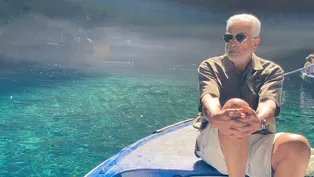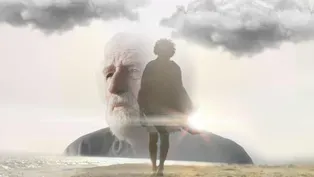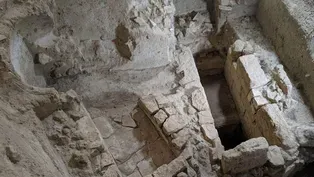
Ismini Describes Excavation
Clip: 8/28/2024 | 2m 25sVideo has Closed Captions
Ismini Milliaresis describes the archeological dig that took place on her family's land on Kefalonia
Ismini Milliaresis describes the dig that took place on her family's land on Kefalonia in 1992. The discovery of a large, beehive-shaped tomb raised hopes that this might be the final resting place of a Bronze-Age Mycenean king. After clearing the debris, archeologists expected to find burials. However, the floor of the tomb was empty … until they realized the floor was not really a floor.

Ismini Describes Excavation
Clip: 8/28/2024 | 2m 25sVideo has Closed Captions
Ismini Milliaresis describes the dig that took place on her family's land on Kefalonia in 1992. The discovery of a large, beehive-shaped tomb raised hopes that this might be the final resting place of a Bronze-Age Mycenean king. After clearing the debris, archeologists expected to find burials. However, the floor of the tomb was empty … until they realized the floor was not really a floor.
How to Watch Odysseus Returns
Odysseus Returns is available to stream on pbs.org and the free PBS App, available on iPhone, Apple TV, Android TV, Android smartphones, Amazon Fire TV, Amazon Fire Tablet, Roku, Samsung Smart TV, and Vizio.
Buy Now
Providing Support for PBS.org
Learn Moreabout PBS online sponsorshipIsmini!
Hey, Ismini!
Ismini ...!
My father and my family are from here.
I used to spend my summers here and we heard that they were starting to excavate this area.
It so happened that it was on my family's land, so it was really exciting.
And my mom was just sort of videotaping around in general.
I think we had probably just had a video camera for a little while.
And she's filming everything.
Here we are on the inside ... As you can see there's a circle.
The stones ... Of course, I'm going to talk!
I was about, I guess, 14 or 15, I guess 15 probably.
That's the head archeologist right there.
I was always really excited and interested in archeology.
And so I would come and watch what they did every day.
And it just really was something that really was important to me.
When the excavation started, of course I went a lot, but I had three small children to take care of.
And the shop.
And we rented rooms.
So I was running around all day anyways.
So I didn't have so much opportunity to go so often.
But I went there regularly.
Maki was there almost every day.
To be there, you know, when they're digging up these thousand-of-year-old bones and, you know, pieces of pottery and other things, like it's a different experience.
They found pottery shards, Ismini says.
Ismini says it looks like pottery shards.
Where?
- In that box.
It looks like bones.
When they arrived at the floor of the tholos tomb, they cleaned the whole tholos tomb and they were on this level, there was nothing, absolutely nothing!
So that was a kind of, "What's happening here?"
I mean, that was so strange.
And then if you would stamp on the floor with your foot, you could hear that it was hollow underneath.
And then they discovered that the floor was not a floor, and there were ancient burials under the floor.
Video has Closed Captions
In 1992, the discovery of a tomb leads to claims that the body buried there is King Odysseus. (1m 37s)
Video has Closed Captions
The 1992 excavation of the tomb Makis Metaxas found gives up an incredible piece of evidence. (2m 36s)
Video has Closed Captions
Makis Metaxas believes Odysseus' kingdom was in his hometown on the island of Kefalonia. (2m 37s)
Video has Closed Captions
An ancient tomb might prove that the hero of Homer’s Odyssey really existed. (30s)
Video has Closed Captions
Homer calls Odysseus “King of the Ithacans.” But there are no Mycenaean ruins on modern-day Ithaki. (1m 55s)
Providing Support for PBS.org
Learn Moreabout PBS online sponsorship